Stephanie A. Mann's Blog, page 259
September 25, 2013
Father Faber on the Son Rise Morning Show
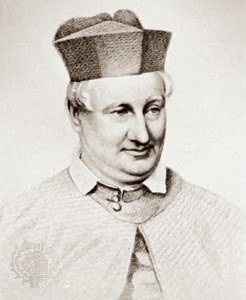
I'll be on the Son Rise Morning Show this morning at 7:45 a.m. Eastern/6:45 a.m. Central to discuss the life and influence of Father Frederick Faber, Oratorian and hymnist. You can listen live here online. He is probably best known for his great hymn, "Faith of Our Fathers", sung to the tune St. Catherine by Henri F. Hemy:
1. Faith of our fathers, living still,
in spite of dungeon, fire, and sword;
O how our hearts beat high
with joy whene'er we hear that glorious word! Refrain:
Faith of our fathers, holy faith!
We will be true to thee till death.
2. Faith of our fathers, we will strive
to win all nations unto thee;
and through the truth that comes from God,
we all shall then be truly free.
(Refrain)
3. Faith of our fathers, we will love
both friend and foe in all our strife;
and preach thee, too, as love knows
how by kindly words and virtuous life.
(Refrain)
From Crisis Magazine :
When Father Frederick Faber died in September 1863 after a long illness, there was an outpouring of grief for this Oxford Movement convert. The Freeman’s Journal in Dublin remarked that Faber’s death, “though so long expected, has come with a seeming suddenness…. [T]he name of Father Faber has become a household word as his beautiful hymns have been adopted by every congregation.” The funeral, which was held at the Brompton Oratory that Faber had established ten years earlier, attracted a great crowd. Many of Faber’s fellow Oratorians attended, including John Henry Newman. A number of diocesan priests came as well, including Monsignor Henry Manning, who would soon be appointed Archbishop of Westminster. Also participating were Dominican and Capuchin friars along with priests from France, Belgium and Germany. A correspondent for the Freeman’s Journal recounted the ceremony: “A procession was formed down the centre of the church, the cross being borne in front, and the clergymen walking two by two between the vast crowd which thronged the building. It was a sight calculated to cause deep feelings.”
Faber had accomplished much in the 49 years that God had allotted him. He had arrived at Oxford University in the early 1830s just as the Oxford Movement was taking shape. Like Newman, Faber was drawn to the Church Fathers and hoped that Anglicanism would accept the Early Church understanding of sacraments and liturgy as its own. Ordained an Anglican minister in 1839, Faber quickly lost confidence in the Church of England and wanted to convert to Catholicism. Newman, however, urged him to wait. By the fall of 1845, Newman, too, had despaired of Anglicanism and was received into the Catholic Church. Faber followed a month later. Newman and Faber and the dozens of other Oxford ministers who entered the Catholic Church knew they were taking a bold and radical step. Catholics in England were a small, suspect group, associated in the public imagination with “Bloody Mary,” the Spanish Armada and the Gunpowder Plot. When reporting on the conversions, some English newspapers described them as “perversions.” . . .
In recent years, however, Faber’s reputation has suffered. Some Catholics have found him too Roman, too Marian, too exuberant in his piety. Some Newman scholars have sided with Newman in his quarrel with Faber and have written disparagingly of Faber. . . .
Professor Sylva described the results of that disagreement between Blessed John Henry Newman and Father Frederick Faber in her book on Newman and Italy when Newman traveled to visit different Italian Oratories and with Pope Pius IX to determine that each Oratory could have separate missions, depending on their situation and charisms. The Birmingham Oratory was more focused on education than the London or Brompton Oratory, and through his journey through northern Italy and to Rome, Newman and Ambrose St. John received confirmation that this was not only appropriate, but part of the Oratory rule.
The Provost of the London Oratory writes in his September newsletter that a requiem Mass was scheduled for today in honor of their founder. Father Frederick Faber died on September 26, 1863. He also wrote many devotional works, including All for Jesus, Growth in Holiness, and works on the Blessed Sacrament, the Precious Blood, the Sorrows of the Blessed Virgin Mary, and others. His other famous hymn is "There's a Wideness in God's Mercy":
There's a wideness in God's mercy
like the wideness of the sea;there's a kindness in his justice,which is more than liberty.There is welcome for the sinner,and more graces for the good;there is mercy with the Savior; there is healing in his blood.
There is no place where earth's sorrowsare more felt than in heaven;there is no place where earth's failingshave such kind judgment given.There is plentiful redemptionin the blood that has been shed;there is joy for all the membersin the sorrows of the Head.
For the love of God is broaderthan the measure of man's mind;and the heart of the Eternalis most wonderfully kind.If our love were but more faithful,we should take him at his word;and our life would be thanksgivingfor the goodness of the Lord.
Published on September 25, 2013 22:30
September 23, 2013
September 24: Our Lady of Ransom and Our Lady of Walsingham
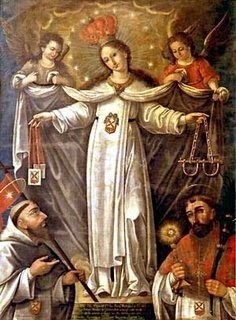 Until the year 2000 when the Vatican approved the new calendar for the Dioceses of England and Wales, today was the Feast of Our Lady of Ransom. A guild was founded in 1887 with "three special intentions:
Until the year 2000 when the Vatican approved the new calendar for the Dioceses of England and Wales, today was the Feast of Our Lady of Ransom. A guild was founded in 1887 with "three special intentions:
~~the conversion of England and Wales in general, and of individuals in particular;
~~the rescue of apostates and those in danger of apostasy;
~~the forgotten dead, who, owing to the Reformation, or to being isolated converts, or other causes, are without special Masses and prayers."
The origins of the feast and its connection to St. Raymond of Penyafort and the Mercedarian Order:
The Blessed Virgin appeared in 1218 in separate visions to St. Peter Nolasco, St. Raymond of Penafort and James, king of Aragon, asking them to found a religious order dedicated to freeing Christian captives from the barbarous Saracens or Moors, who at the time held a great part of Spain. On August 10, 1218, King James established the royal, military and religious Order of our Lady of Ransom (first known as the Order of St. Eulalia, now known as the Mercedarian Order), with the members granted the privilege of wearing his own arms on their breast. Most of the members were knights, and while the clerics recited the divine office in the commanderies, they guarded the coasts and delivered prisoners. This pious work spread everywhere and produced heroes of charity who collected alms for the ransom of Christians, and often gave themselves up in exchange for Christian prisoners. This feast, kept only by the Order, was extended to the whole Church by Innocent XII in the 17th century.
More here from the same site. You might note the scapular Our Lady is holding in her right hand, as her left hand holds the chains and manacles of captivity. More about the scapular here. With the increased violence against Christians in the Middle East and in Africe, revival of this devotion seems appropriate!
O God, through the glorious Mother of Your Son You enriched the Church with a new religious congregation dedicated to freeing Christians from slavery among the heathens. We venerate Mary as the foundress of this institution and pray that she may also deliver us from our sins and the slavery of the devil through her own merits and intercession. Through the same Jesus Christ, our Lord . . . Amen.
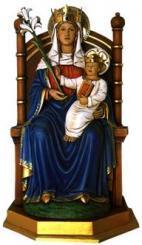 Since the year 2000, September 24 is the Feast of Our Lady of Walsingham in England, and in 2011 the shrine(s) celebrated the 950th anniversary of the founding of "England's Nazareth". Today in Walsingham there are two shrines--one Catholic, one Anglican. Thomas Cromwell, Henry VIII's vice regent in these spiritual matters, had the first (Catholic) shrine destroyed along with other shrines to the Mother of God throughout England. The statues were brought to the Chelsea area of the London and destroyed in a bonfire. Walsingham calls itself "England's Nazareth" and promotes both the Catholic and the Anglican shrines on its tourism website.
Since the year 2000, September 24 is the Feast of Our Lady of Walsingham in England, and in 2011 the shrine(s) celebrated the 950th anniversary of the founding of "England's Nazareth". Today in Walsingham there are two shrines--one Catholic, one Anglican. Thomas Cromwell, Henry VIII's vice regent in these spiritual matters, had the first (Catholic) shrine destroyed along with other shrines to the Mother of God throughout England. The statues were brought to the Chelsea area of the London and destroyed in a bonfire. Walsingham calls itself "England's Nazareth" and promotes both the Catholic and the Anglican shrines on its tourism website.
In 1893, Pope Leo XIII promised: "When England returns to Walsingham, Our Lady will return to England." Even after Pope Leo restored the shrine of Our Lady of Walsingham in 1897, it took some time for [Catholic] England to return to Walsingham. In 1922, the Anglo-Catholic Father Hope Patton established the Anglican shrine of Our Lady of Walsingham. In 1934, the Archbishop of Westminster, Cardinal Bourne, led a major pilgrimage to the Catholic Walsingham and it became the National Marian Shrine.
With Pope Emeritus Benedict XVI's foundation of the first Personal Ordinariate for groups of former Anglicans on January 15, 2011, named for Our Lady of Walsingham, Our Lady's return to England was even more firmly established.
O alone of all women, Mother and Virgin, Mother most happy, Virgin most pure, now we sinful as we are, come to see thee who are all pure, we salute thee, we honour thee as how we may with our humble offerings; may thy Son grant us, that imitating thy most holy manners, we also, by the grace of the Holy Ghost may deserve spiritually to conceive the Lord Jesus in our inmost soul, and once conceived never to lose him. Amen.
All Holy and ever-living God, in giving us Jesus Christ to be our Saviour and Brother, You gave us Mary, His Mother, to be our Mother also; grant us, we pray you, to live lives worthy of so great a Brother and so dear a Mother, that we may come at last to you the Father of us all, Who lives and reigns for ever. Amen.
Our Lady of Walsingham, Pray for us.
 Until the year 2000 when the Vatican approved the new calendar for the Dioceses of England and Wales, today was the Feast of Our Lady of Ransom. A guild was founded in 1887 with "three special intentions:
Until the year 2000 when the Vatican approved the new calendar for the Dioceses of England and Wales, today was the Feast of Our Lady of Ransom. A guild was founded in 1887 with "three special intentions: ~~the conversion of England and Wales in general, and of individuals in particular;
~~the rescue of apostates and those in danger of apostasy;
~~the forgotten dead, who, owing to the Reformation, or to being isolated converts, or other causes, are without special Masses and prayers."
The origins of the feast and its connection to St. Raymond of Penyafort and the Mercedarian Order:
The Blessed Virgin appeared in 1218 in separate visions to St. Peter Nolasco, St. Raymond of Penafort and James, king of Aragon, asking them to found a religious order dedicated to freeing Christian captives from the barbarous Saracens or Moors, who at the time held a great part of Spain. On August 10, 1218, King James established the royal, military and religious Order of our Lady of Ransom (first known as the Order of St. Eulalia, now known as the Mercedarian Order), with the members granted the privilege of wearing his own arms on their breast. Most of the members were knights, and while the clerics recited the divine office in the commanderies, they guarded the coasts and delivered prisoners. This pious work spread everywhere and produced heroes of charity who collected alms for the ransom of Christians, and often gave themselves up in exchange for Christian prisoners. This feast, kept only by the Order, was extended to the whole Church by Innocent XII in the 17th century.
More here from the same site. You might note the scapular Our Lady is holding in her right hand, as her left hand holds the chains and manacles of captivity. More about the scapular here. With the increased violence against Christians in the Middle East and in Africe, revival of this devotion seems appropriate!
O God, through the glorious Mother of Your Son You enriched the Church with a new religious congregation dedicated to freeing Christians from slavery among the heathens. We venerate Mary as the foundress of this institution and pray that she may also deliver us from our sins and the slavery of the devil through her own merits and intercession. Through the same Jesus Christ, our Lord . . . Amen.
 Since the year 2000, September 24 is the Feast of Our Lady of Walsingham in England, and in 2011 the shrine(s) celebrated the 950th anniversary of the founding of "England's Nazareth". Today in Walsingham there are two shrines--one Catholic, one Anglican. Thomas Cromwell, Henry VIII's vice regent in these spiritual matters, had the first (Catholic) shrine destroyed along with other shrines to the Mother of God throughout England. The statues were brought to the Chelsea area of the London and destroyed in a bonfire. Walsingham calls itself "England's Nazareth" and promotes both the Catholic and the Anglican shrines on its tourism website.
Since the year 2000, September 24 is the Feast of Our Lady of Walsingham in England, and in 2011 the shrine(s) celebrated the 950th anniversary of the founding of "England's Nazareth". Today in Walsingham there are two shrines--one Catholic, one Anglican. Thomas Cromwell, Henry VIII's vice regent in these spiritual matters, had the first (Catholic) shrine destroyed along with other shrines to the Mother of God throughout England. The statues were brought to the Chelsea area of the London and destroyed in a bonfire. Walsingham calls itself "England's Nazareth" and promotes both the Catholic and the Anglican shrines on its tourism website. In 1893, Pope Leo XIII promised: "When England returns to Walsingham, Our Lady will return to England." Even after Pope Leo restored the shrine of Our Lady of Walsingham in 1897, it took some time for [Catholic] England to return to Walsingham. In 1922, the Anglo-Catholic Father Hope Patton established the Anglican shrine of Our Lady of Walsingham. In 1934, the Archbishop of Westminster, Cardinal Bourne, led a major pilgrimage to the Catholic Walsingham and it became the National Marian Shrine.
With Pope Emeritus Benedict XVI's foundation of the first Personal Ordinariate for groups of former Anglicans on January 15, 2011, named for Our Lady of Walsingham, Our Lady's return to England was even more firmly established.
O alone of all women, Mother and Virgin, Mother most happy, Virgin most pure, now we sinful as we are, come to see thee who are all pure, we salute thee, we honour thee as how we may with our humble offerings; may thy Son grant us, that imitating thy most holy manners, we also, by the grace of the Holy Ghost may deserve spiritually to conceive the Lord Jesus in our inmost soul, and once conceived never to lose him. Amen.
All Holy and ever-living God, in giving us Jesus Christ to be our Saviour and Brother, You gave us Mary, His Mother, to be our Mother also; grant us, we pray you, to live lives worthy of so great a Brother and so dear a Mother, that we may come at last to you the Father of us all, Who lives and reigns for ever. Amen.
Our Lady of Walsingham, Pray for us.
Published on September 23, 2013 22:30
September 22, 2013
For the First Day of Autumn: A Poem by Gerard Manley Hopkins

Spring and Fall
to a young child
Margaret, are you grieving
Over Goldengrove unleaving?
Leaves, like the things of man, you
With your fresh thoughts care for, can you?
Ah! as the heart grows older
It will come to such sights colder
By & by, nor spare a sigh
Though worlds of wanwood leafmeal lie;
And yet you wíll weep and know why.
Now no matter, child, the name:
Sorrow’s springs are the same.
Nor mouth had, no nor mind, expressed
What héart héard of, ghóst guéssed:
It is the blight man was born for,
It is Margaret you mourn for.
Picture Copyright Mark U. Mann (2013): taken in the Tuilieries Gardens in Paris.
Published on September 22, 2013 22:30
September 20, 2013
The Seventeenth Century Cardinal Protector of England
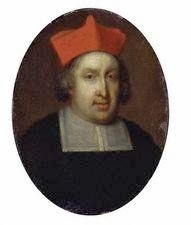 According to the
Catholic Encylopedia
, Philip Cardinal Howard was a:
According to the
Catholic Encylopedia
, Philip Cardinal Howard was a: Dominican and cardinal, commonly called the "Cardinal of Norfolk"; born at Arundel House, London, 21 September, 1629; died at Rome, 17 June, 1694. He was the third son of Henry Frederick Howard, afterwards Earl of Arundel and Surrey and head of the House of Norfolk (the dukedom of Norfolk being forfeited, though restored in 1660). The mother of Philip was Elizabeth, daughter of the Duke of Lennox; he was thus allied to the reigning sovereign of England. At the age of sixteen he joined the Dominican Order in Italy, was professed at Rome, 1646, and took the name of Thomas in religion. Residing at Naples for his studies, he was chosen to deliver a Latin address to the general chapter of his order in Rome. He justified the choice delivering a fervent address on the conversion of England, which led to a decree being passed by the chapter, urging provincials and priors to do all they could to receive English, Irish, and Scotch novices into the order, with a view to its preservation in those countries. He was thenceforth wholly devoted to the conversion of England and to the progress of his order in that country. He was ordained priest in 1652, and with the sanction of his superiors set himself to carry out the ideas he had matured in his mind. He founded the priory of Bornhem in Flanders, with a college for English youths attached to it, and was himself the first prior and novice master. He also founded at Vilvorde a convent of nuns of the Second Order of St. Dominic, now at Carisbrooke.
In the reign of Charles II Father Howard was made grand almoner to Queen Catherine of Braganza. He resided at St. James's Palace, with a salary of 500 pounds a year, and had a position of influence at Court. An outbreak of Puritan violence compelling him to leave England, he resumed his position as prior at Bornhem. He was made cardinal in 1675, by Pope Clement X, being assigned the title of S. Cecilia trans Tiberim, exchanged later for the Dominican church of S. Maria supra Minervam. He now took up his residence at Rome and entered into the service of the Universal Church, especially watching over the interests of the Catholic faith in England.
In 1672 he was nominated by the Holy See as Vicar Apostolic of England with a see in partibus, but the appointment, owing to the opposition of the "English Chapter" to his being a vicar Apostolic, and the insistence that he should be a bishop with ordinary jurisdiction, was not confirmed. He was to have been Bishop of Helenopolis. In 1679 he was made Protector of England and Scotland. At his instance the Feast of St. Edward the Confessor was extended to the whole Church. He rebuilt the English College in Rome, and revised the rules of Douai College.
Cardinal Howard cooperated later with James II in the increase of vicars Apostolic in England from one to four, an arrangement which lasted till 1840, when the number was increased to eight by Gregory XVI. Burnet shows in his "History" that Cardinal Howard regretted the steps which led to the crisis in the reign of James II and which his counsels sought to avert. The cardinal's plans were thwarted and the ill-starred mission of the Earl of Castlemaine to Rome showed the rise of another spirit which he did not share. When the crisis he foresaw came, he had the consolation at least of knowing that his foundation at Bornhem was beyond the grasp of the new persecutors.
Cardinal Howard assisted at three conclaves, for the election of Innocent XI in 1676, Alexander VIII in 1689, and Innocent XII in 1691. He died in the twentieth year of his cardinalate, at the age of 64, and was buried in his titular church of S. Maria supra Minervam at Rome.His foundations in Flanders flourished till the French Revolution, when they were despoiled to a great extent, and were eventually transferred to England. The English Dominican Province looks to him as its father and restorer, and the American Province also regards him to a great extent in the same light. After his death the Master General, Father Antoninus Cloche, addressed a letter to the whole order, lamenting the loss of one who had done so great a work for the English Church and the order.
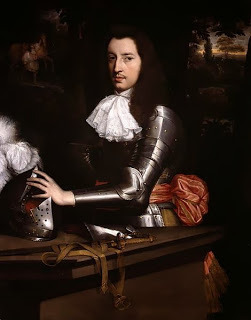 As the website for the Dominican order in England notes, his efforts were crucial to re-establish community life for those English men and women following their call to vocation in the religious life. Cardinal Howard was the third son of Henry Howard, the 22nd Earl of Arundel, son of Thomas Howard, the 21st Earl of Arundell and the son of St. Philip Howard, the 20th Earl of Arundel. His eldest brother, Thomas Howard, although he did succeed as the 5th Duke of Norfolk, was mentally deficient, and the middle brother, Henry Howard, fulfilled the elder's duties at Earl Marshall, succeeding him as the 6th Duke of Norfolk in 1677. It's sad to note that Henry Howard voted in the House of Lords for the conviction of his uncle William Howard, the 1st Viscount Stafford (along with almost all of the other Howards) in the charge of treason brought upon him by the Popish Plot--especially when Henry Howard had been forced into exile by the Test Acts and been charged with recusancy himself. Only his son, also named Henry, voted for the Viscount's innocence.
As the website for the Dominican order in England notes, his efforts were crucial to re-establish community life for those English men and women following their call to vocation in the religious life. Cardinal Howard was the third son of Henry Howard, the 22nd Earl of Arundel, son of Thomas Howard, the 21st Earl of Arundell and the son of St. Philip Howard, the 20th Earl of Arundel. His eldest brother, Thomas Howard, although he did succeed as the 5th Duke of Norfolk, was mentally deficient, and the middle brother, Henry Howard, fulfilled the elder's duties at Earl Marshall, succeeding him as the 6th Duke of Norfolk in 1677. It's sad to note that Henry Howard voted in the House of Lords for the conviction of his uncle William Howard, the 1st Viscount Stafford (along with almost all of the other Howards) in the charge of treason brought upon him by the Popish Plot--especially when Henry Howard had been forced into exile by the Test Acts and been charged with recusancy himself. Only his son, also named Henry, voted for the Viscount's innocence.
Published on September 20, 2013 22:30
September 18, 2013
Three Years Ago Today
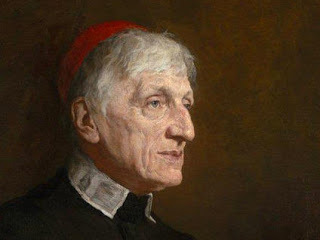
It's amazing to think that it has already been three years since Emeritus Pope Benedict XVI presided over the beatification of John Henry Newman at Cofton Park in Birmingham, England. Reading Benedict's homily on that occasion never fails to inspire me, because he demonstrated such sure comprehension of Newman's greatness and holiness:
Cardinal Newman’s motto, Cor ad cor loquitur, or "Heart speaks unto heart", gives us an insight into his understanding of the Christian life as a call to holiness, experienced as the profound desire of the human heart to enter into intimate communion with the Heart of God. He reminds us that faithfulness to prayer gradually transforms us into the divine likeness. As he wrote in one of his many fine sermons, "a habit of prayer, the practice of turning to God and the unseen world in every season, in every place, in every emergency – prayer, I say, has what may be called a natural effect in spiritualizing and elevating the soul. A man is no longer what he was before; gradually … he has imbibed a new set of ideas, and become imbued with fresh principles" (Parochial and Plain Sermons, iv, 230-231). Today’s Gospel tells us that no one can be the servant of two masters (cf. Lk 16:13), and Blessed John Henry’s teaching on prayer explains how the faithful Christian is definitively taken into the service of the one true Master, who alone has a claim to our unconditional devotion (cf. Mt 23:10). Newman helps us to understand what this means for our daily lives: he tells us that our divine Master has assigned a specific task to each one of us, a "definite service", committed uniquely to every single person: "I have my mission", he wrote, "I am a link in a chain, a bond of connexion between persons. He has not created me for naught. I shall do good, I shall do his work; I shall be an angel of peace, a preacher of truth in my own place … if I do but keep his commandments and serve him in my calling" (Meditations and Devotions, 301-2).
The definite service to which Blessed John Henry was called involved applying his keen intellect and his prolific pen to many of the most pressing "subjects of the day". His insights into the relationship between faith and reason, into the vital place of revealed religion in civilized society, and into the need for a broadly-based and wide-ranging approach to education were not only of profound importance for Victorian England, but continue today to inspire and enlighten many all over the world. I would like to pay particular tribute to his vision for education, which has done so much to shape the ethos that is the driving force behind Catholic schools and colleges today. Firmly opposed to any reductive or utilitarian approach, he sought to achieve an educational environment in which intellectual training, moral discipline and religious commitment would come together. The project to found a Catholic University in Ireland provided him with an opportunity to develop his ideas on the subject, and the collection of discourses that he published as The Idea of a University holds up an ideal from which all those engaged in academic formation can continue to learn. And indeed, what better goal could teachers of religion set themselves than Blessed John Henry’s famous appeal for an intelligent, well-instructed laity: "I want a laity, not arrogant, not rash in speech, not disputatious, but men who know their religion, who enter into it, who know just where they stand, who know what they hold and what they do not, who know their creed so well that they can give an account of it, who know so much of history that they can defend it" (The Present Position of Catholics in England, ix, 390). On this day when the author of those words is raised to the altars, I pray that, through his intercession and example, all who are engaged in the task of teaching and catechesis will be inspired to greater effort by the vision he so clearly sets before us.
While it is John Henry Newman’s intellectual legacy that has understandably received most attention in the vast literature devoted to his life and work, I prefer on this occasion to conclude with a brief reflection on his life as a priest, a pastor of souls. The warmth and humanity underlying his appreciation of the pastoral ministry is beautifully expressed in another of his famous sermons: "Had Angels been your priests, my brethren, they could not have condoled with you, sympathized with you, have had compassion on you, felt tenderly for you, and made allowances for you, as we can; they could not have been your patterns and guides, and have led you on from your old selves into a new life, as they can who come from the midst of you" ("Men, not Angels: the Priests of the Gospel", Discourses to Mixed Congregations, 3). He lived out that profoundly human vision of priestly ministry in his devoted care for the people of Birmingham during the years that he spent at the Oratory he founded, visiting the sick and the poor, comforting the bereaved, caring for those in prison. No wonder that on his death so many thousands of people lined the local streets as his body was taken to its place of burial not half a mile from here. One hundred and twenty years later, great crowds have assembled once again to rejoice in the Church’s solemn recognition of the outstanding holiness of this much-loved father of souls. What better way to express the joy of this moment than by turning to our heavenly Father in heartfelt thanksgiving, praying in the words that Blessed John Henry Newman placed on the lips of the choirs of angels in heaven:
Praise to the Holiest in the height
And in the depth be praise;
In all his words most wonderful,
Most sure in all his ways!
(The Dream of Gerontius).
Published on September 18, 2013 22:30
September 16, 2013
Constitution Day and the Two Catholic Signers of the Constitution
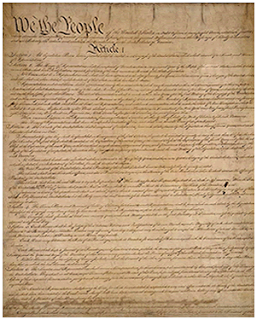 Today is Constitution Day in the U.S.A., a day we unfortunately do not celebrate with fireworks and bands as we do our Independence Day. While it is true that Independence Day is well worth celebrating because it signifies our nation's founding as an independent country, Constitution Day is even more worthy of celebration because it demonstrates what we did when establishing our nation, limiting the power of government and protecting the rights of individuals. Of course, our country had to develop the definition of who had those rights as citizens, but the Constitution is a magnificent document of rights and restraints.
Today is Constitution Day in the U.S.A., a day we unfortunately do not celebrate with fireworks and bands as we do our Independence Day. While it is true that Independence Day is well worth celebrating because it signifies our nation's founding as an independent country, Constitution Day is even more worthy of celebration because it demonstrates what we did when establishing our nation, limiting the power of government and protecting the rights of individuals. Of course, our country had to develop the definition of who had those rights as citizens, but the Constitution is a magnificent document of rights and restraints. Here is a link to the official website for Constitution Day, which includes profiles of Daniel Carroll and Thomas Fitzsimmons, the two Catholic signers of the Constitution. Carroll was the cousin of Charles Carroll of Carrolltown and brother of John Carroll, Jesuit priest (until the Society of Jesus was suppressed by the pope) and first Catholic bishop in the U.S.A.
Daniel Carroll (July 22, 1730 – July 5, 1796) was a politician and one of the Founding Fathers of the United States. He was a prominent member of one of America's great colonial families that included his cousin Charles Carroll of Carrollton who signed the Declaration of Independence, and his brother John Carroll who was the first Catholic bishop in the United States. He was one of only five men to sign both the Articles of Confederation and the Constitution of the United States.
Carroll was a patrician planter who fused family honor with the cause of American independence, willingly risking his social and economic position in the community for the Patriot cause. Later, as a friend and staunch ally of George Washington, he worked for a strong central government which could secure the achievements and fulfill the hopes of the Revolution. Ironically, for one whose name was synonymous with the colonial aristocracy, Carroll fought in the Convention for a government responsible directly to the people of the country. . . .
He wanted governmental power vested in the people, and he joined James Wilson in campaigning for popular sovereignty. When it was suggested that the President should be elected by the Congress, it was Carroll, seconded by James Wilson, who moved that the words "by the legislature" be replaced with "by the people". His signature on the Constitution made him one of two Roman Catholics to sign the document, a further symbol of the advance of religious freedom in America during the Revolutionary period.
Carroll did not arrive at the Constitutional Convention until July 9, but thereafter he attended quite regularly. He spoke about 20 times during the debates and served on the Committee on Postponed Matters. Returning to Maryland after the convention, he campaigned for ratification of the Constitution but was not a delegate to the state convention.
Thomas Fitzsimmons was also born in Ireland:
Thomas Fitzsimons (1741–1811) was an American merchant and statesman of Philadelphia, Pennsylvania. He represented Pennsylvania in the Continental Congress, the Constitutional Convention, and the U.S. Congress. Fitzsimons was born in Ireland around 1741. By 1760 he had immigrated to Philadelphia, and began work as a clerk in a mercantile house. He married Catherine Meade on November 23, 1761 and formed a business partnership with her brother George. Their firm specialized in the West Indies trade, and would operate successfully for over 41 years.
As the Revolution neared, he supported the Whig position. Early in the Revolutionary War he served as captain of a company of home guards, but the only report of their actions was to support the regular troops for the Battle of Trenton in 1776. Later in the war he provided supplies, ships, and money in support of Pennsylvania’s forces.
Fitzsimons entered active politics as a delegate to the Continental Congress in 1782 and 1783. He was a member of Pennsylvania’s House of Representatives in 1786 and 1787. He was also a delegate to the U.S. Constitutional Convention in 1787. Although not a leading member of that convention, he did support a strong national government, opposed slavery, and favored giving the Congress powers to tax import and exports, as well as granting the house and the senate equal power in making treaties. He was one of only two Catholic signers of the United States Constitution.
Published on September 16, 2013 23:00
Herbert and Donne: Metaphysical Poets
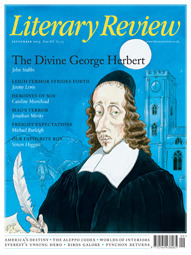 John Stubbs reviews Music at Midnight: The Life and Poetry of George Herbert by John Drury in this month's Literary Review, including a comparison and contrast of George Herbert and John Donne:
John Stubbs reviews Music at Midnight: The Life and Poetry of George Herbert by John Drury in this month's Literary Review, including a comparison and contrast of George Herbert and John Donne:Quite unlike Donne's life of adventure, disgrace, regretful isolation and self-fashioned redemption, Herbert's followed a steady trajectory of study, duty and meditation. His main dilemma seems to have been whether to pursue a public career - as his talents, social connections and perhaps family pressures disposed him to - or to take the cloth. There was, of course, no direct contradiction between the two: a bishop in the 1620s could still become a high-ranking minister. Yet Herbert seemed aware that the priesthood would take him in another direction towards simplicity and comparative solitude. He followed the example set by men such as Lancelot Andrewes, the famed preacher and one-time dean of Westminister, who would spend the entire morning alone in prayer when his duties allowed: events were always counterpointed by steady and, by any standard, gruelling rituals of prayer, reading, repeating and mastering declensions. Not a life for everyone; yet it helped quieten rather than stifle the heart.
I struck the board, and cried, No more.
I will abroad.
What? Shall I ever sigh and pine?
My life and lines are free; free as the road,
Loose as the wind, as large as store.
Herbert as much as Donne voices the waywardness of the passions, the anger that can send a child charging like an escaping balloon. But Herbert looks for a solution where Donne insists there is only a puzzle. For Donne, knowledge lies in dilemma, in paradox; for Herbert, this is only a stage. Their poetic language is also entirely different. In his famous 'Song: Go, and catch a falling star', for example, in telling his listener to 'Ride ... Till age snow white hairs on thee', Donne uses a metaphor from Horace, which an ancient book on rhetoric, Quintilian's Institutio Oratoria, explicitly disapproved of as 'far-fetched'. He even goes a step or three further. Snow is a metaphor for the visible effects of old age (white hair) and indeed age itself, but it is hard or even silly to visualise 'white hairs' literally snowing down onto someone's head. We have to go beyond that idea, by degrees, to the one Donne intends.
There is no such bad behaviour in Herbert. Because of this and other differences, the two poets have their camps of rival supporters; Drury avowedly belongs to Herbert's. In life, Donne and Herbert took mutual benefit from their diverse casts of mind. Although Donne was twenty years senior, he didn't treat Herbert as the younger man. They spent the summer of plague in 1625 together at the home of Herbert's stepfather in Chelsea and became respectful friends. By then Donne was the dean of St Paul's and was finding new self-definition in a venue that demanded preaching 'loose as the wind, as large as store' to fill its vast Gothic chamber. Herbert's path, on the other hand, lay towards minimalism, the quietness of retreat. He worked in small parishes, doing much to restore to his church at Leighton Bromswold and supporting the religious community at Little Gidding, the group in Huntingdonshire invoked in the fourth of T S Eliot's Four Quartets. Eliot, in many ways torn between the vision of Donne and the brighter influence of Herbert, illustrates the futility of asking which poet might be greater: we need both.
John Drury's excellent book is a fine guide and companion to such questions, bringing Herbert's 'life and lines' along the road without ever forcing a step. His attitude to Herbert the poet is one of inexhaustible wonder and inquiry, while to the man who died at 39 he is almost father-like, tender and humane. Music at Midnight should not cause readers or students to neglect Amy Charles's Life of George Herbert (1977), but no one interested in this writer should be without it.
Note that John Stubbs is the author of a biography of John Donne: Donne: The Reformed Soul (2006).
Published on September 16, 2013 22:30
September 15, 2013
Catholic Metaphors in Shakespeare
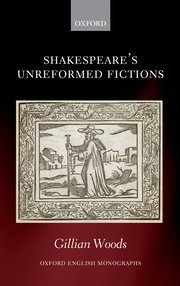 The Catholic English Teacher reports on a lecture by Dr. Gillian Woods, who cites one of my favorite passages from Shakespeare's Romeo and Juliet to demonstrate how the Bard used Catholic metaphors in his plays that would have recalled times before the English Reformation to those old enough to remember:
The Catholic English Teacher reports on a lecture by Dr. Gillian Woods, who cites one of my favorite passages from Shakespeare's Romeo and Juliet to demonstrate how the Bard used Catholic metaphors in his plays that would have recalled times before the English Reformation to those old enough to remember:Romeo:
If I profane with my unworthiest hand
This holy shrine, the gentle sin is this:
My lips, two blushing pilgrims, ready stand
To smooth that rough touch with a tender kiss.
Juliet:
Good pilgrim, you do wrong your hand too much,
Which mannerly devotion shows in this;
For saints have hands that pilgrims' hands do touch,
And palm to palm is holy palmers' kiss.
Romeo:
Have not saints lips, and holy palmers too?
Juliet:
Ay, pilgrim, lips that they must use in prayer.
Romeo:
O, then, dear saint, let lips do what hands do;
They pray — grant thou, lest faith turn to despair.
Juliet:
Saints do not move, though grant for prayers' sake.
Romeo:
Then move not, while my prayer's effect I take.
So while Shakespeare uses all these Catholic religious terms in the cause of romantic wooing between Romeo and Juliet, the ground of the metaphor is pilgrimage and sainthood and he knew his audience knew enough of those terms to make sense of the metaphor. Pilgrimage and devotion to the saints were definitely Catholic themes: pilgrimage sites in England had been destroyed during the course of the reigns of Henry VIII and Edward VI and devotion to saints through prayer and even visiting their shrines (which brings up the notion of relics) had been removed from English practice.
Dr. Woods has her own metaphor for these Catholic traces in Shakespeare's plays reports the blogger:
What do we make then of what she called this "residue" or "memory of the faith that had been banned and rejected"? It seems clear that there were a range of options available to people in post-Reformation England, ranging from nostalgia to fear, from hatred to acceptance. Many of these responses appear in Shakespeare's plays. In fact, many of them appear within individual plays, creating a complex picture that needs to be read in a historically informed way.
Dr Woods used a helpful metaphor in her lecture, suggesting that the ways in which Catholicism is present in Shakespeare's plays are akin to the ways in which pre-Reformation wall paintings survived in the post-Reformation Church. Many were simply removed. Some were literally defaced (in order to make it clear that the Reformed Church in England was not just a new church but a rejection of the Old Church, that it was - in some sense - still in dialogue with it). And others were whitewashed, perhaps in the hope that they might one day be uncovered, though the images still seeped through. (The definitive work on all of this is Eamon Duffy's The Stripping of the Altars.)
I like this last metaphor in particular: we can see Catholicism seeping through the language and drama of Shakespeare's plays without having to get drawn into largely fruitless discussions about his own religious inclinations.
Dr. Gillian Woods is the author of this book, Shakespeare's Unreformed Fictions, which answers the question:
Why does Catholicism have such an imaginative hold on Shakespearean drama, even though the on-going Reformation outlawed its practice? Shakespeare's Unreformed Fictions contends that the answers to this question are theatrical rather than strictly theological. Avoiding biographical speculation, this book concentrates on dramatic impact, and thoroughly integrates new literary analysis with fresh historical research.
In exploring the dramaturgical variety of the "Catholic" content of Shakespeare's plays, Gillian Woods argues that habits, idioms, images, and ideas lose their denominational clarity when translated into dramatic fiction: they are awkwardly "unreformed" rather than doctrinally Catholic. Providing nuanced readings of generically diverse plays, this book emphasises the creative function of such unreformed material, which Shakespeare uses to pose questions about the relationship between self and other. A wealth of contextual evidence is studied, including catechisms, homilies, religious polemics, news quartos, and non-Shakespearean drama, to highlight how early modern Catholicism variously provoked nostalgia, faith, conversion, humour, fear, and hatred. This book argues that Shakespeare exploits these contradictory attitudes to frame ethical problems, creating fictional plays that consciously engage audiences in the difficult leaps of faith required by both theatre and theology. By recognizing the playfulness of Shakespeare's unreformed fictions, this book offers a different perspective on the interactions between post-Reformation religion and the theatre, and an alternative angle on Shakespeare's interrogation of the scope of dramatic fiction.
Published on September 15, 2013 22:30
September 13, 2013
The Triumph of the Cross
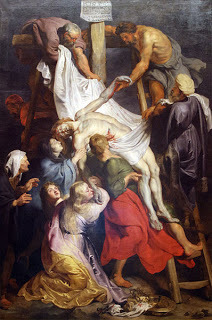
If you subscribe to OSV's The Catholic Answer Magazine , you could be reading my article on "The Cross Triumphant: What are the Feasts of the Holy Cross and Our Lady of Sorrows?" today on this Feast of the Exaltation of the Cross. If you don't subscribe to that magazine, you could instead read this article from last year's edition of PraytheMass.org, on which The Catholic Answer Magazine article was based (Dr. Bunson requested I rewrite the article for him).
The Church presents us with another beautiful matching of a Feast of Our Savior and a Memorial of Our Mother Mary this month (like the pair of Hearts, Sacred and Immaculate, following the Solemnity of Corpus Christi in June). The Feast of the Exaltation of the Holy Cross is on September 14; the memorial of Our Lady of Sorrows follows on September 15. The pairing of these celebrations, even in their different levels on the liturgical and sanctoral calendars, properly guides us in our devotion and love of Our Savior and Our Lady. Both celebrations have a long history and are worthy of meditation.
The Feast of the Triumph of the Cross was observed in Rome in the late seventh century to commemorate the recovery of the Holy Cross by the Byzantine Emperor Heraclius in 629. St. Helena, Constantine’s mother, had found the True Cross in Jerusalem in the fourth century but the Persians had captured it and returned it after Heraclius defeated the Persian king Khosrau. The emperor returned it to Jerusalem, and this feast recalls that event.
But on a deeper level, of course, the Feast recalls Jesus’ triumph over death and the fulfillment of His great statement, “When I am lifted up from the earth, I will draw everyone to myself.” (John 12:32, which serves as the Communion Antiphon). The liturgy of the Mass for this Feast includes both triumph and sorrow in the readings and prayers, since Jesus both suffers His Passion and defeats sin and death. From the Book of Numbers, the First Reading recalls the story of Moses and the bronze Seraph, raised on a pole—when the people Israel who had been grumbling against God for their sufferings, looked up to the serpent, they were healed of the serpent bites God had sent to afflict them.
Read the rest here.
The painting above is one of Ruben's depictions of the Descent from the Cross. During one of our visits to Belgium, I went on a day tour to Antwerp and saw the great Raising of the Cross, Descent from the Cross, and Resurrection paintings in the Cathedral of Our Lady.
Published on September 13, 2013 22:30
September 10, 2013
King John III Sobieski and the Battle of Vienna
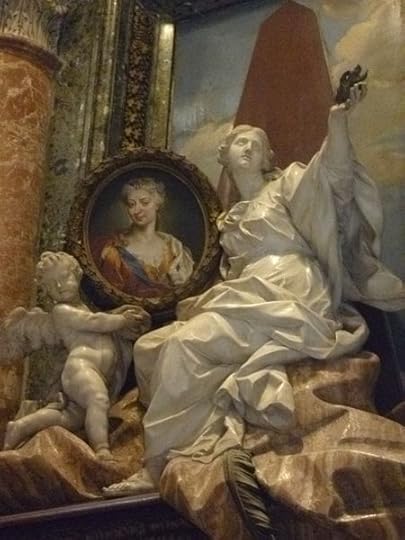 In addition to being the 12th anniversary of the 9/11 attacks in the United States, this is the 330th anniversary of the Battle of Vienna, at which King Jan Sobieski of Poland led the combined imperial and Polish forces to defeat the Ottoman Empire Believe it or not, there's a connection between September 11, 1683 and the long English Reformation: Maria Clementina Sobieska, the granddaughter of King Jan Sobieski married James Francis Edward Stuart:
In addition to being the 12th anniversary of the 9/11 attacks in the United States, this is the 330th anniversary of the Battle of Vienna, at which King Jan Sobieski of Poland led the combined imperial and Polish forces to defeat the Ottoman Empire Believe it or not, there's a connection between September 11, 1683 and the long English Reformation: Maria Clementina Sobieska, the granddaughter of King Jan Sobieski married James Francis Edward Stuart:Being one of Europe's wealthiest heiresses, she was betrothed to James Francis Edward Stuart. King George I of Great Britain was opposed to the marriage because he feared that the union might produce heirs to James Francis Edward's claim to his thrones. To placate him, the Holy Roman Emperor Charles VI arrested Maria Clementina while on her way to Italy to marry James Francis Edward. She was confined in Innsbruck Castle but eventually the guards were deceived and Maria Clementina escaped to Bologna, Italy, where, for safety from further intrusions, she was married by proxy to James who was in Spain at that time.
Maria Clementina's father, James Louis Sobieski, approved her escape declaring that, as she became engaged to James Francis Edward she ought to "follow his fortune and his cause".
Maria Clementina and James Francis Edward were formally married on 3 September 1719 in the Chapel of episcopal palace of Montefiascone, Italy in the Cathedral of Santa Margherita. Following their marriage, James and Maria Clementina were invited to reside in Rome at the special request of Pope Clement XI, who acknowledged them as the King and Queen of England, Scotland and Ireland.
The Pope provided them with a papal guard of troops, gave them the Palazzo Muti in the Piazza dei Santi Apostoli in Rome to live in, plus a country villa at Albano. The Catholic Church also provided them with an annual allowance of 12,000 crowns out of the papal treasury. The Popes Clement XI and Innocent XIII considered James and Maria Clementina the rightful and, more importantly, Catholic King and Queen of England, Scotland and Ireland: the cousin of Pope Innocent XIII, Francesco Maria Conti, from Siena, was here the Gentiluomo di Camera (the chamberlaine) in the little Roman Jacobite court.
The married life of James and Maria Clementina proved turbulent and unhappy. Soon after their second child's birth (Henry Benedict), Maria Clementina left him and went to live in Rome in the convent of St. Cecilia. She accused her husband of adultery and he said it was sinful to leave him and her children. (Their first son was Charles Edward, aka Bonnie Prince Charlie.) It was more than two years before they reconciled.
Maria Clementina died at the early age of 32 on 18 January 1735. She was interred with full royal honors in St. Peter's Basilica in Rome. Pope Clement XII ordered that she have a state burial. Pope Benedict XIV commissioned Pietro Bracci (1700–1773) to sculpt a monument to her memory, which was erected in the Basilica.
More on the Battle of Vienna, September 11 to 12, 1683, here.
Published on September 10, 2013 23:00



